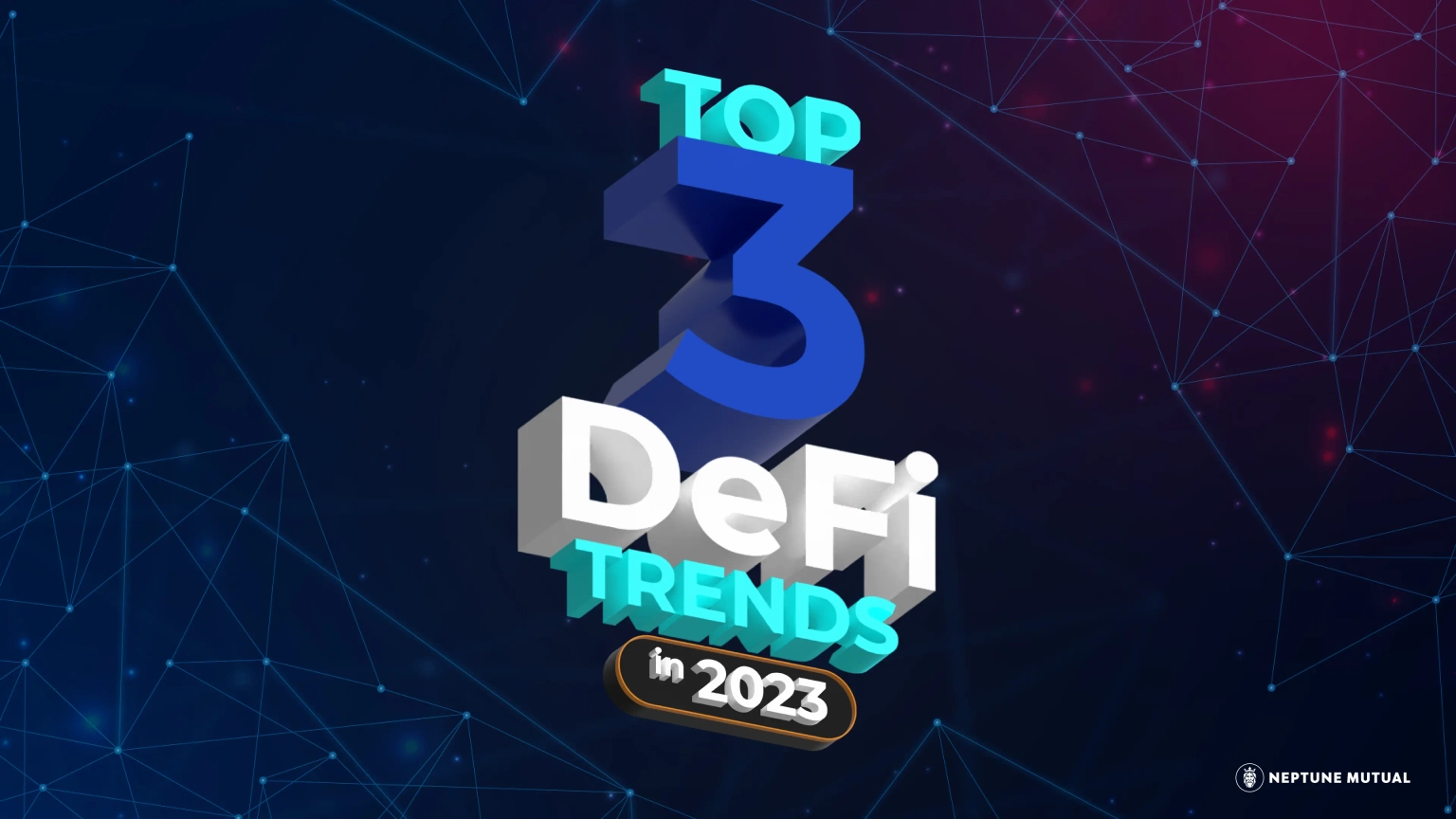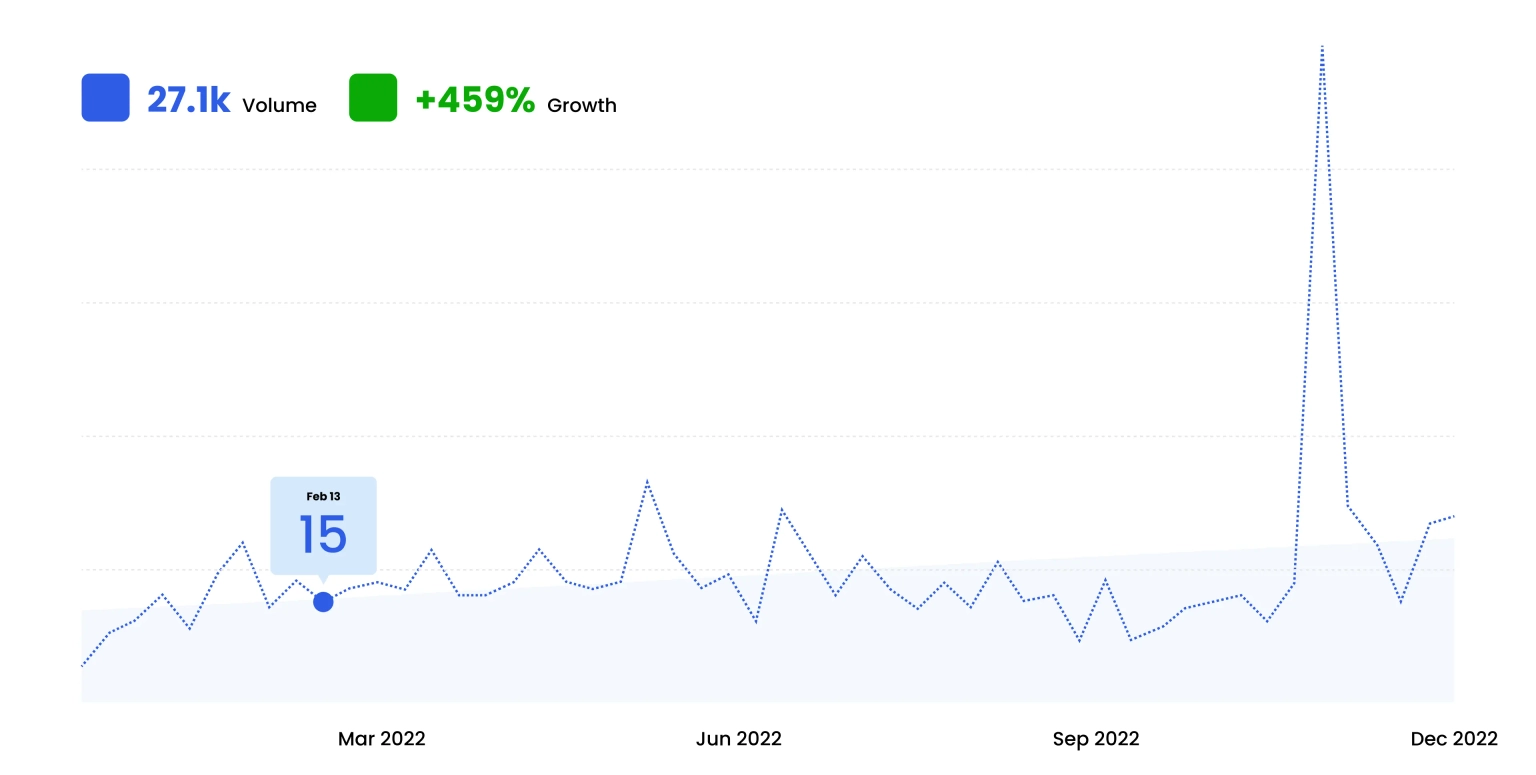
Collaboration between Neptune Mutual and SushiSwap
Explore Neptune Mutual's ongoing collaboration with SushiSwap offering several benefits.
Youtube Video
Playing the video that you've selected below in an iframe

Learn what 2023 holds for the blockchain industry and what new trends to anticipate.

The crypto and DeFi markets have been through the mill for the most part of 2022. There was a bit of optimism early on in the year with everyone expecting Bitcoin and other cryptocurrencies to continue their impressive bull run from the year before. Alas, here we are in December 2022 and Bitcoin has struggled to stay above $17,000 for the last couple of weeks. All the other cryptocurrencies have also seen their values drop massively throughout the year.
The DeFi and Web3 markets have not fared any better. Specifically, the total value locked (TVL) in DeFi shrank from over $176 billion in December 2021 to a meager $40 billion just a year after.
But it hasn't been all bad news for blockchain projects and communities. There have been tons of new developments and positive updates that make us excited to look forward to the new year ahead.
What does 2023 have in store? What changes and new trends can we expect in the blockchain industry over the coming months?
Well, we don’t have a crystal ball to see into the future. But we can analyze current market data to get an idea of what trends may dominate in 2023 – a year that seems like it will be fraught with change.
Estimated at over $1 quadrillion, the total value of financial derivatives in the traditional financial markets is humongous – even larger than the global GDP.
For those not in the know, financial derivatives products are contracts whose respective values are derived from the performance of an underlying entity. This can be anything from precious metals, livestock, oil, or even index derivatives that are tied to the performance of well-known indices like the S&P 500, Nasdaq 100, etc.
Given the integral role that derivative contracts play in traditional finance, it should be no surprise that derivatives are emerging in the DeFi landscape. However, in contrast, the total value of the DeFi derivatives market is a meager $27.8 billion. While there is still a long way to go until it is a respectable distance from the total value of financial derivatives in the traditional financial markets, it also means there is a lot of room for unprecedented growth.
Some of the biggest names in DeFi derivatives include Maker, Synthetix, Perpetual, dYdX, and BarnBridge. These projects help facilitate the exchange of value, as well as provide users the opportunity to speculate on tokens that provide exposure to the underlying assets without having to buy them directly.
User interest in these projects has soared in 2022. For instance, Google searches for “MakerDAO” and “Synthetix” went up over 455% and 360% respectively, this year. Will this interest translate to a more robust DeFi derivatives market in 2023? Only time will tell.

Search interest in "MakerDAO" has grown over the last year. Courtesy of explodingtopics.com
Directly related to the growth of DeFi derivative products is the rise in prominence for DeFi Insurance.
Like its traditional counterpart, DeFi insurance is all about mitigating risk exposure in high-risk environments. Basically, DeFi insurance matches DeFi users looking to earn income with those looking to reduce risk.
Nexus Mutual, InsureAce, BrightUnion, and Bridge Mutual are among the leading names in decentralized insurance. These blockchain-based insurance protocols help facilitate peer-to-peer insurance coverage where funds are pooled and the liquidity in them is used to underwrite claims. Cover purchasers pay a premium to this pool and receive a payout based on the terms of the contract.
A recent and exciting addition to the expanding lineup of DeFi insurance protocols is Neptune Mutual. What makes this platform standout is that it is a marketplace for parametric insurance to cover against smart contract risk. Under this insurance model, coverage and payout are based on predetermined parameters. If a predefined trigger event occurs, policyholders get a payout; if not, they don’t. It’s that simple.
The Neptune Mutual parametric cover marketplace went live on November 8, 2022 and currently has cover products for several DeFi and CeFi projects, including MakerDAO, Synthetix, AAVE, Balancer, and Binance Exchange.
One of the primary appeals of DeFi dApps is that they are inherently anonymous. Names are not attached to wallet addresses and there’s no standard Know Your Customer (KYC) policy nor government regulatory body in place.
Many people believe this level of anonymity should be preserved, however, there are also valid concerns that a lack of some form of KYC oversight makes it easier for cybercriminals to operate and go scott free.
For this reason, many industry experts view regulation for crypto and DeFi projects as being inevitable.
Certain regions have already set up regulatory frameworks that are starting to see some form of implementation. In March, the European Parliament announced that all crypto transactions must be traceable, as part of the new EU anti-money laundering package. This ban on anonymous transactions applies even to the tiniest value transfers.
What this means is that developers must find ways to incorporate identity verification for users of their dApps. It will be interesting to see how they go about it without compromising the ethos of operating within a decentralized financial system.
Overall 2023 promises to be an exciting year for DeFi. That being said, it’s important to remember that the landscape is still relatively new, especially when compared to traditional financial institutions. There are lots of known and unknown risks haunting the space all the time, so you’ll need to be proactive with your safety and security measures for your digital assets.
Secure your favorite DeFi tokens and other related assets against smart contract risks with a parametric cover policy on Neptune Mutual. Find a cover product, input how much coverage you want and for how long. You can check out our video tutorials to learn more about how to interact with the marketplace.